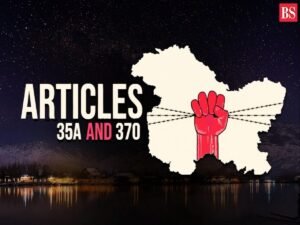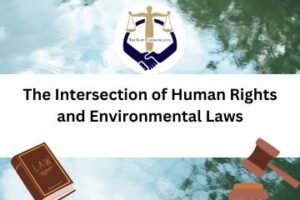Paradox of Tribal Rights
Written By Ashima Mishra
Introduction
Indian Forest is the site of conflict for both cultural diversity and biodiversity. The conflicts stem from injustice dating back to colonial times. Huge tracts of forests, inhabited by culturally diverse communities were arrogated by the colonial rules. Later, independent India and its states displayed a paradox. Proof says that conservation enforced by the creation of protected areas and policed by anti-poaching squads leads to eviction and abuse of vast numbers of people, especially tribal community people and also fails to check the ongoing environmental crisis.
A new and unique way of approach is an essential need. Conservation should mainly protect the land rights of the people to whom their vital and important areas are home. The problem with our country India is that instead of recognizing tribal people rights, we just take random decisions and ultimately it violates the rights of tribal communities.
Forest conservation and tribal rights have been always contradictory to each other. As we all know India has a huge level of contribution in the field of environmental law. In pre-independent India, there was an act named the “Indian Forest Act” which was passed in 1927. It was proved as very effective legislation but with the due course, the need for amendments and new laws rose which gave birth to the Forest Conservation Act 1980.
The main objective of the Forest Conservation Act of 1980 was to prevent the fast depleting condition of the forests in the country. As we know that the subject of forestry has been placed under the concurrent list that’s why it is necessary for the state government to take permission from the central government to use forestland for other purposes and uses.
Forest and Tribal Rights- Equally Important
When it comes to conservation, not only forest is important but the tribal community residing inside those forests are also equally important. The tribal rights are also equally vital for living a quality and dignified life. It is also a fact that for many ages tribals or indigenous people inhabited, cultivated, grazed their cattle and made a living out of the resources and products they get from the forest without any restrictions.
Till 1983, the tribal community were free to use and enjoy all the forest resources, but all of a sudden the colonial rule took place and this ultimately led the British regime to take control over the entire forestland.
There also came a time when the tribals were declared as illegal or encroachers in their own lands. The entire tribal group had to undergo several hardships, exploitation and struggle. The resentment and rebellion by tribals occurred across the country at different times.
Even though the British Regime overpowered everything but still there left hope for those tribal people whose entire livelihood depended upon the forest.
In contemporary times, around 200 million tribals and other traditional forest dwellers in India derive their livelihoods mainly from forest resources. However, in the absence of proper survey, settlement and land record, their customary rights over forest land have always been under threat. That’s why the parliament of India has enacted separate legislation for balancing both the maintenance of forest as well as the rights of the tribal community to have full-fledged access to forest resources.
The effective implementation of the Scheduled Tribes and Other Forest Dwellers (Recognition of Forest Rights) Act, 2006, which recognizes the individual as well as community rights over forest resources, should have ended the historical injustice caused to the tribals by erstwhile governments. But the manner in which various State governments either neglected or slowed its implementation in the post-2006 period speak a lot about the tragedy of forest rights of tribals.
There is also a separate act called India’s Forest Rights Act. This act is also a step forward in the same direction. It empowers the communities to use, manage and govern forests for their livelihood as well as for the conservation and protection of forests. But its poor implementation remains an issue.
The Act basically speaks about two things:
- Grants legal recognition to the rights of traditional forest dwelling communities, partially correcting the injustice caused by the forest laws.
- Makes a beginning towards giving communities and the public a voice in forest and wildlife conservation.
Who Is A Forest Dweller And What Are Their Rights?
There are two stages to be eligible under this Act. First, everyone has to satisfy two conditions:
- Primarily residing in forests or forest lands;
- Depends on forests and forest land for a livelihood (namely “bona fide livelihood needs”)
Rights under This Act
- The law recognises three types of rights:
- Land Rights
- No one gets rights to any land that they have not been cultivating prior to December 13, 2005 (see section 4(3)) and that they are not cultivating right now. Those who are cultivating land but don’t have document can claim up to 4 hectares, as long as they are cultivating the land themselves for a livelihood (section 3(1) (a) and 4(6)). Those who have a patta or a government lease, but whose land has been illegally taken by the Forest Department or whose land is the subject of a dispute between Forest and Revenue Departments, can claim those lands (see section 3(1)(f) and (g)).
- There is no question of granting 4 hectares of land to every family. If I am cultivating half a hectare on December 13, 2005, I receive title to that half a hectare alone; and if I am cultivating nothing, I receive nothing. If I am cultivating more than 4 hectares without documents or a dispute, I receive title to only 4 hectares.
- The land cannot be sold or transferred to anyone except by inheritance (see section 4(4)).
- Use Rights
- The law secondly provides for rights to use and/or collect the following:
- a. Minor forest produce things like tendu patta, herbs, medicinal plants etc “that has been traditionally collected (see section 3(1) (c)). This does not include timber.
- b. Grazing grounds and water bodies (sections 3
- c. Traditional areas of use by nomadic or pastoralist communities i.e. communities that move with their herds, as opposed to practicing settled agriculture.
- Right to Protect and Conserve
- though the forest is supposed to belong to all of us, till date no one except the Forest Department had a right to protect it. If the Forest Department should decide to destroy it, or to hand it over to someone who would, stopping them was a criminal offence.
- For the first time, this law also gives the community the right to protect and manage the forest
Conclusion
The government of India and as well as the respective state governments as per the advice and directions are given by the central government should look after the enormous economic, social and ecological benefits of individual and community forest management and accordingly implement the Forest Rights Act, 2006 in its right spirit.
Keywords: Paradox of Tribal Rights, Paradox of Tribal Rights in India, Paradox of Tribal Rights
Previous Posts
Right to form association or unions: Constitutional, legislative and judicial perspective
Right to get water: the recent development and constitutional framework
The International Criminal Court as a Court – An Evaluation
Victims of crime: Restoration and Legal care under Indian Criminal Jurisprudence




